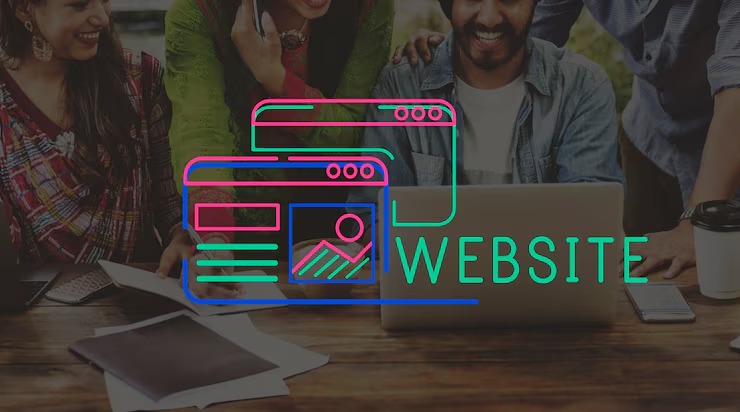Elevate Your Brand: Mastering WordPress Design
Elevate Your Brand: Mastering WordPress Design in 2025
WordPress, still the undisputed king of content management systems in 2025, offers unparalleled flexibility. But that power comes with a responsibility: designing a website that not only looks stunning but also converts. This isn’t just about pretty pixels; it’s about crafting a digital experience that embodies your brand and drives results.
Why WordPress Design Still Matters (More Than Ever)
In a digital landscape saturated with information, first impressions are everything. Your WordPress design is your digital handshake, and a weak grip can send potential customers running.
- Branding: A consistent and professional design solidifies your brand identity.
- User Experience (UX): Intuitive navigation and engaging visuals keep visitors on your site.
- Search Engine Optimization (SEO): Well-designed sites perform better in search rankings.
- Conversion Rates: Effective design leads to increased leads, sales, and customer loyalty.
A clunky, outdated WordPress site is a liability. It signals that your business is out of touch. Investing in a modern, user-centric design is an investment in your future success.
The Top WordPress Design Trends Shaping 2025
Staying ahead of the curve means understanding the latest design trends. Here’s what’s hot in the world of WordPress design right now:
- Neobrutalism: Embracing raw, minimalist aesthetics with bold typography and asymmetrical layouts. Think stark contrasts, basic shapes, and a rebellion against overly polished designs.
- AI-Powered Design Assistants: Tools that suggest design elements, generate content, and even predict user behavior are becoming increasingly integrated into the WordPress workflow.
- Immersive 3D Elements and Animations: Subtle 3D effects and engaging animations add depth and dynamism to the user experience. Think interactive product showcases and captivating scrolling experiences.
- Voice User Interface (VUI) Optimization: Designing for voice search is no longer optional. Ensuring your WordPress site is easily navigable and understandable by voice assistants is crucial.
- Accessibility-First Design: Prioritizing inclusivity by adhering to WCAG guidelines. Making your website accessible to users with disabilities is not just ethical; it’s good for business.
- Micro-Interactions and Gamification: Small, delightful interactions that provide feedback to the user and gamified elements that encourage engagement. Think progress bars, interactive quizzes, and reward systems.
- Dark Mode Optimization: Catering to users who prefer dark mode by offering a seamless and visually appealing dark mode option. Reduces eye strain and enhances readability in low-light conditions.
Choosing the Right WordPress Theme: A Strategic Approach
Selecting a WordPress theme is a crucial decision. It’s the foundation of your website’s design. Don’t just pick a theme based on aesthetics alone; consider these factors:
- Responsiveness: Ensure the theme is fully responsive and adapts seamlessly to all devices. Mobile-first indexing is still a major ranking factor.
- Customization Options: Look for a theme that offers ample customization options without requiring extensive coding knowledge. Page builders like Elementor and Beaver Builder can be incredibly helpful.
- SEO Friendliness: Choose a theme with clean code, fast loading speeds, and built-in SEO features. Poorly coded themes can negatively impact your search rankings.
- Security: Opt for a theme from a reputable developer with a strong track record of security updates. Vulnerable themes can make your website susceptible to hacking.
- Compatibility: Make sure the theme is compatible with the plugins you plan to use. Incompatibility issues can lead to website errors and functionality problems.
Investing in a premium theme from a trusted source is often the best approach. While free themes may seem appealing, they often lack the features, support, and security updates of their paid counterparts.
Essential WordPress Plugins for Enhanced Design
Plugins extend the functionality of your WordPress site, allowing you to add features and enhance the design without writing code. Here are some must-have plugins for WordPress design:
- Elementor or Beaver Builder: Drag-and-drop page builders that provide complete control over your website’s layout and design.
- Advanced Custom Fields (ACF): Allows you to create custom fields for your content, providing greater flexibility and control over how your data is displayed.
- Smush: Optimizes images to reduce file size and improve website loading speeds. Faster loading speeds are crucial for SEO and user experience.
- Contact Form 7 or Gravity Forms: Create custom contact forms to capture leads and gather information from your visitors.
- Yoast SEO or Rank Math: Optimize your website for search engines with these powerful SEO plugins.
Optimizing Your WordPress Design for Conversions
A beautiful website is useless if it doesn’t convert visitors into customers. Here are some tips for optimizing your WordPress design for conversions:
- Clear Call-to-Actions (CTAs): Use prominent and persuasive CTAs to guide visitors towards desired actions, such as making a purchase or filling out a form.
- Compelling Headlines: Craft headlines that grab attention and clearly communicate the value proposition of your product or service.
- High-Quality Images and Videos: Use visually appealing images and videos to showcase your products or services and engage your audience.
- Social Proof: Display testimonials, reviews, and case studies to build trust and credibility.
- Simplify Navigation: Make it easy for visitors to find what they are looking for with clear and intuitive navigation.
- Mobile Optimization: Ensure your website is fully optimized for mobile devices.
- A/B Testing: Continuously test different design elements and content to identify what works best for your audience.
Don’t underestimate the power of whitespace. Strategic use of whitespace can improve readability and draw attention to key elements.
WordPress Design Best Practices for 2025
- Prioritize User Experience: Design with the user in mind. Make it easy for visitors to find what they are looking for and accomplish their goals.
- Maintain Brand Consistency: Ensure your website design aligns with your overall brand identity. Use consistent colors, fonts, and imagery.
- Optimize for Speed: Website loading speed is critical. Optimize images, use caching plugins, and choose a fast hosting provider.
- Focus on Accessibility: Make your website accessible to users with disabilities by following WCAG guidelines.
- Keep it Simple: Avoid clutter and unnecessary elements. A clean and minimalist design is often the most effective.
- Stay Updated: Keep your WordPress core, themes, and plugins up to date to ensure security and performance.
How-To: Implement a Neobrutalist Design in WordPress
Want to embrace the bold aesthetics of neobrutalism? Here’s a quick guide:
- Choose a Suitable Theme: Look for themes with minimalist designs and support for custom typography.
- Embrace Bold Typography: Use large, impactful fonts with strong contrast.
- Experiment with Asymmetrical Layouts: Break away from traditional grid layouts and create visual interest with asymmetrical arrangements.
- Incorporate Basic Shapes: Use geometric shapes and lines to add visual structure and emphasis.
- Limit Color Palettes: Stick to a limited color palette with high contrast.
- Add Raw Textures: Incorporate textures like grain or noise to add a raw, unfiltered feel.
WordPress Design FAQs
- What is the best WordPress page builder? Elementor and Beaver Builder are both excellent choices, offering drag-and-drop functionality and extensive customization options.
- How much does WordPress design cost? The cost can vary widely depending on the complexity of the project. A simple website might cost a few hundred dollars, while a more complex website could cost several thousand.
- How can I improve my WordPress website’s loading speed? Optimize images, use caching plugins, choose a fast hosting provider, and minimize the number of plugins you use.
- What are the key elements of accessible website design? Proper color contrast, alternative text for images, keyboard navigation, and semantic HTML.
Ready to transform your WordPress website into a powerful brand asset?
The Future of WordPress Design: AI and Beyond
Looking ahead, artificial intelligence (AI) will continue to play an increasingly important role in WordPress design.
- AI-powered design tools will automate many tasks, such as generating content, optimizing images, and suggesting design elements.
- AI will also enable more personalized user experiences, by analyzing user data and tailoring the website design to individual preferences.
- Augmented reality (AR) and virtual reality (VR) technologies may also become integrated into WordPress websites, creating immersive and interactive experiences.
Staying informed about these emerging technologies and adapting your WordPress design strategy accordingly will be essential for staying ahead of the competition. A proactive approach to design and an eye toward innovation can keep your brand relevant and engaging for years to come.


